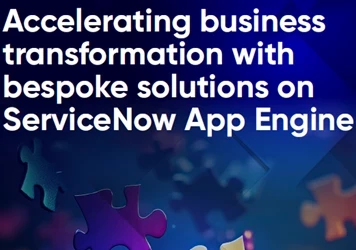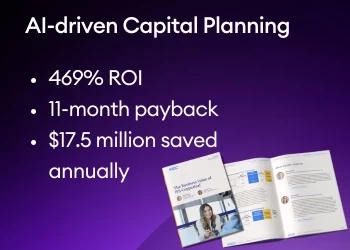Meeting the NHS’s key transformation objectives
By connecting systems, optimizing workflows and harnessing data, the NHS can start turning transformation ambition into measurable results
Add bookmark
The UK's National Health Service (NHS) faces a formidable business transformation challenge. One of the UK government’s flagship manifesto commitments is “building an NHS fit for the future.” Achieving this, however, demands more than ambition. It requires tackling two pressing challenges simultaneously: boosting productivity and cutting costs.
These twin imperatives are embodied in two concrete targets: returning to the NHS constitutional standard where 92 percent of patients wait less than 18 weeks for elective treatment and addressing the £7 billion (over US$9 billion) funding deficit threatening financial sustainability. In simple terms, the NHS must find ways to do more with less.
Join the PEX Network community

Don't miss any news, updates or insider tips from PEX Network by getting them delivered to your inbox. Sign up to our newsletter and join our community of experts.
Learn MoreDigital-first strategy as a gateway to transformation
The 10-Year Health Plan for England emphasizes three pivotal shifts: from analogue to digital, from hospital to community and from sickness to prevention. Of these, digital transformation is the keystone. Only by digitizing processes can hospitals connect meaningfully with community services and only with rich, accessible data can proactive, preventative care be delivered.
The question for NHS leaders and operational teams is: how can technology and smart software start delivering impact today?
Reducing waiting times with smarter technology
The 92 percent target for elective treatment waiting times has not been met since September 2015. In recent years, just 60 percent of patients receive planned treatment within 18 weeks. Meeting this target would require productivity growth of at least 4.9 percent, a steep climb given current funding constraints.
One of the main obstacles is IT inefficiency. Siloed systems, inconsistent data practices and limited interoperability mean that information does not flow smoothly across clinical pathways. Around £250 million is still spent annually on paper-based processes, slowing responses and frustrating clinicians. These gaps exist across primary, secondary, community and mental health services, as well as between different hospital trusts and departments.
Electronic patient records (EPRs) have been rolled out across almost all NHS trusts, but implementation alone is not enough. The focus now must be on interoperability: connecting systems to create a single, up-to-date view of patient information. This enables smarter, faster clinical decisions. Use cases include:
- More targeted appointment scheduling based on real-time resource availability.
- Improved case management and patient engagement.
- Automated prescription tracking and alerts.
- Centralized access to documents and patient records.
When integrated across the care ecosystem, these tools provide enriched data to inform workflow improvements and support frontline decision-making. Incremental gains from these technologies can nudge productivity upward without inflating budgets.
Strengthening financial resilience through data and workforce management
Addressing the £7 billion funding gap requires both structural and operational solutions. Trusts are already making cuts: 37 percent are reducing clinical posts, 86 percent non-clinical roles and many are scaling back services such as virtual wards and rehabilitation centers. While necessary, these changes risk affecting staff morale and patient outcomes if not managed carefully.
Digitized workforce management systems can mitigate these risks by automating staff engagement, supporting professional development and monitoring wellbeing. Retaining skilled staff reduces costs associated with turnover and disengagement.
Data-driven tools also help trusts make smarter financial decisions. By analyzing capacity versus demand, modeling future service needs and optimizing resource deployment, these technologies identify hidden efficiencies, reduce reliance on agency staff and extend the reach of constrained budgets.
The NHS’s formidable transformation challenge
The NHS faces a formidable challenge: increasing productivity and reducing costs while maintaining patient outcomes. Digital transformation and intelligent technology adoption are no longer optional; they are the levers that can help the health service achieve its constitutional standards and financial resilience.
By connecting systems, optimizing workflows and harnessing data, the NHS can start turning ambition into measurable results.
PEX Report 2025/26: Global state of business transformation

The PEX Report 2025/26 examines the results of our annual survey of more than 200 professionals with insights from more than a dozen industry business and thought leaders from across the globe. Contributors include leaders from Mars, Navy Federal Credit Union, Pacific International Lines, Sodexo, SAP and Nintex!
Explore why true business transformation is not a singular project but an ongoing journey, one that requires visionary leadership, cross-functional collaboration, technological prowess and an unrelenting commitment to agility and innovation. Those that embrace this evolution holistically are not just surviving the future, they are shaping it!
Download Now













